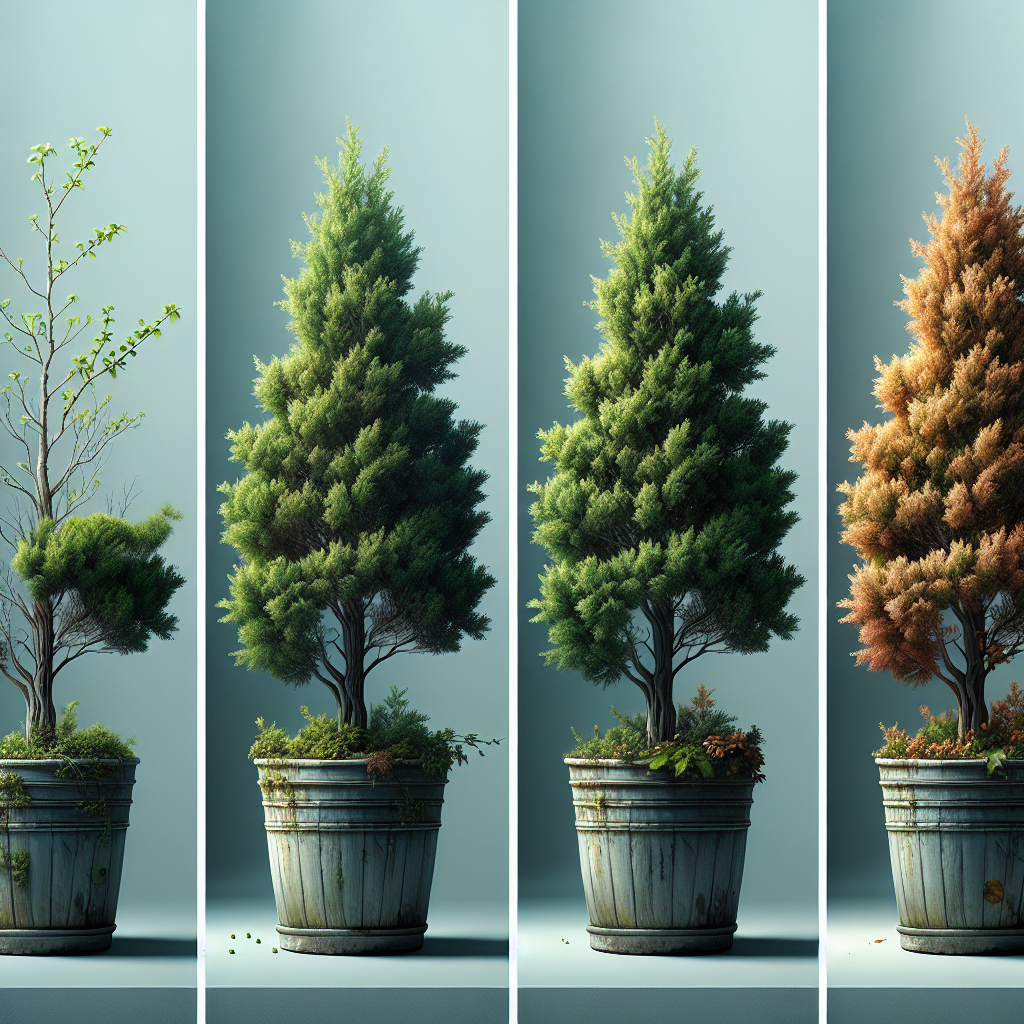Maintaining Healthy Juniper in Containers Through the Seasons
Junipers are popular trees for container gardening due to their evergreen foliage, easy maintenance, and adaptability to various growing conditions. Whether you have a small balcony or a large patio, junipers can add beauty and greenery to your outdoor space. However, growing junipers in containers comes with its own set of challenges, especially when it comes to ensuring their health and vitality through changing seasons. In this article, we will discuss the best practices for maintaining healthy juniper in containers throughout the year.
Selecting the Right Container
The first step in successfully growing juniper in containers is selecting the right pot. Junipers have deep root systems that require plenty of room to grow and spread out. Choose a container that is at least twice as wide and deep as the plant’s root ball. Make sure the pot has drainage holes to prevent waterlogging, which can lead to root rot.
Using the Right Soil Mix
Junipers prefer well-draining soil that is slightly acidic. A mix of sandy loam and peat moss works well for container-grown junipers. You can also add some perlite or sand to improve drainage. Avoid using heavy clay soils or those that retain too much moisture, as they can lead to root rot.
Watering Properly
Proper watering is crucial for maintaining healthy juniper in containers. Overwatering can suffocate the roots and cause them to rot, while underwatering can lead to stress and dehydration. Water your juniper deeply but infrequently, allowing the top inch of soil to dry out between waterings. In hot weather, you may need to water more frequently than in cooler seasons.
Fertilizing Regularly
Junipers are light feeders and do not require frequent fertilization. Use a balanced fertilizer formulated for evergreens once a month during the growing season (spring through early fall). Be careful not to over-fertilize, as this can lead to nutrient imbalances and damage the plant.
Pruning and Trimming
Regular pruning helps maintain the shape and health of your juniper tree. Trim back any dead or diseased branches as soon as you notice them. You can also prune back overgrown branches to control size and shape. Avoid pruning too heavily or cutting into old wood, as this can weaken the plant.
Protecting from Extreme Weather
Junipers are hardy plants but may need protection from extreme weather conditions such as strong winds, heavy rain, or frost. Move your container-grown juniper indoors or into a sheltered area during severe weather events. Mulch around the base of the plant during winter months to insulate against freezing temperatures.
Pest and Disease Control
Keep an eye out for common pests such as spider mites, aphids, scale insects, and fungal diseases like powdery mildew or root rot. Regularly inspect your juniper tree for signs of infestation or disease so you can take prompt action if necessary. Treat pests with insecticidal soap or neem oil spray.
Seasonal Care Tips
Spring: In early spring, repot your juniper if it has outgrown its container or refresh the soil by replacing some of it with fresh mix.
Summer: Water more frequently during hot summer months and provide shade if necessary.
Fall: Reduce watering as temperatures cool down but continue monitoring soil moisture levels.
Winter: Protect your juniper from freezing temperatures by moving it indoors or wrapping it with burlap.
In conclusion, maintaining healthy juniper in containers through changing seasons requires attention to detail and regular care practices such as selecting the right container, using a suitable soil mix, watering properly, fertilizing regularly, pruning when needed, protecting from extreme weather conditions, controlling pests and diseases, and following seasonal care tips. With proper care and attention, your container-grown juniper will thrive year-round and bring joy and beauty to your outdoor space for years to come.













